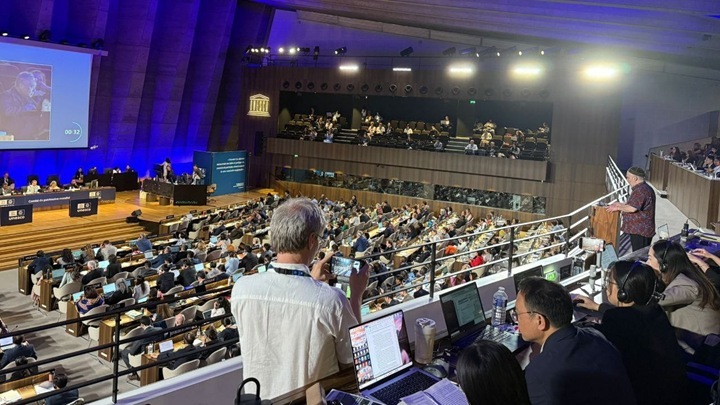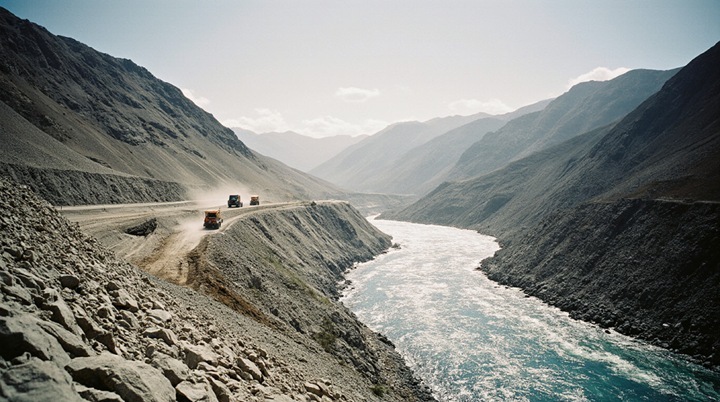The threat has receded: The Western Tien Shan is temporarily saved from dams and mines
Thanks to the efforts of environmentalists, it was possible, at least, to postpone the destruction of the unique UNESCO World Heritage Site “Western Tien Shan”. During the intense discussion at the 47th session of the World Heritage Committee in Paris, a compromise decision was made, which, nevertheless, gives hope for the preservation of the joint natural heritage of Kazakhstan, Kyrgyzstan and Uzbekistan from destructive industrial projects.

The history of the victory of environmentalists began with a wake–up call – the report of the joint reactive mission of UNESCO and the International Union for Conservation of Nature (IUCN), published after their visit to the region in September 2024. Based on the report of the international ecological coalition “Rivers without Boundaries” (Rivers without Boundaries) and their own observations, the experts came to a disappointing conclusion: plans for the construction of numerous dams of hydroelectric power stations and ski resorts, as well as the ongoing gold mining, pose a direct threat to the outstanding universal value of the Western Tien Shan. Experts were particularly concerned about the Chatkal Dam construction project in the Kyrgyz Besh-Aral Nature Reserve and the plan to erect a cascade of Dams on the Ugam River in Kazakhstan’s Sairam-Ugam National Park.
The mission’s report was perceived as a last warning to the three countries. But the situation was aggravated by the fact that the Republic of Kazakhstan, which is now a member of the World Heritage Committee, at a session in Paris tried to soften UNESCO’s requirements in the interests of its industrialists who aimed to profit from the destruction of the heritage site.
As a result, a compromise but effective decision was made. The UNESCO World Heritage Committee has demanded that Kazakhstan suspend the cascade Dam project on the Ugam River until a new, more thorough assessment of its impact on the heritage site. Kyrgyzstan has been ordered to completely stop gold mining on the site and restore the disturbed ecosystems, in response to which the country has already announced plans to revoke licenses from subsoil users. Kyrgyzstan also assured UNESCO that it has no actual intentions to build a Dam in the Besh-Aral Nature Reserve. Uzbekistan, in turn, announced the cancellation of the construction of the Akbulak Dam near its World Heritage site.
In addition, the Committee required all three countries to provide a map of existing and planned Dams in the river basins where the sites of the UNESCO World Heritage Site “Western Tien Shan” are located in order to assess the need for a strategic environmental assessment of the impact on the heritage site of the totality of planned hydropower projects.
The final chord was the speech of the international coordinator of the Rivers Without Boundaries coalition, Yevgeny Simonov, who stated that by making too compromise decisions, the Committee might be surprised at the next session to discover “the construction of Dam cascades in the heart of the World Heritage Site,” and that such a development would be a “disaster.”
“The key moment now is monitoring the implementation of the decision taken,” says Yevgeny Simonov, international coordinator of the Rivers Without Boundaries coalition. – For Kazakhstan, this means the need for a fundamental revision of the water supply project of the Turkestan region in the direction of minimizing its impact on nature and conducting a new assessment of the impact on the World Heritage, taking into account aquatic ecosystems and endemic fish species. For Kyrgyzstan, this is a clear and unambiguous signal to completely and unconditionally abandon the gold mining in the Besh–Aral Reserve, which is detrimental to rivers, and of course from any plans to build Dams there.”
According to the ecologist, if countries follow the UNESCO decision taken in Paris, then there is a chance to preserve the Western Tien Shan as a unique World Heritage Site. If the decision is ignored, then intervention at the international level will be required: the object will be included in the special list of “Heritage under threat”, which provides for the mandatory development, under the auspices of UNESCO, of an urgent action plan to save the object.
Original (in Russian): Угроза отступила: Западный Тянь-Шань временно спасен от плотин и приисков


